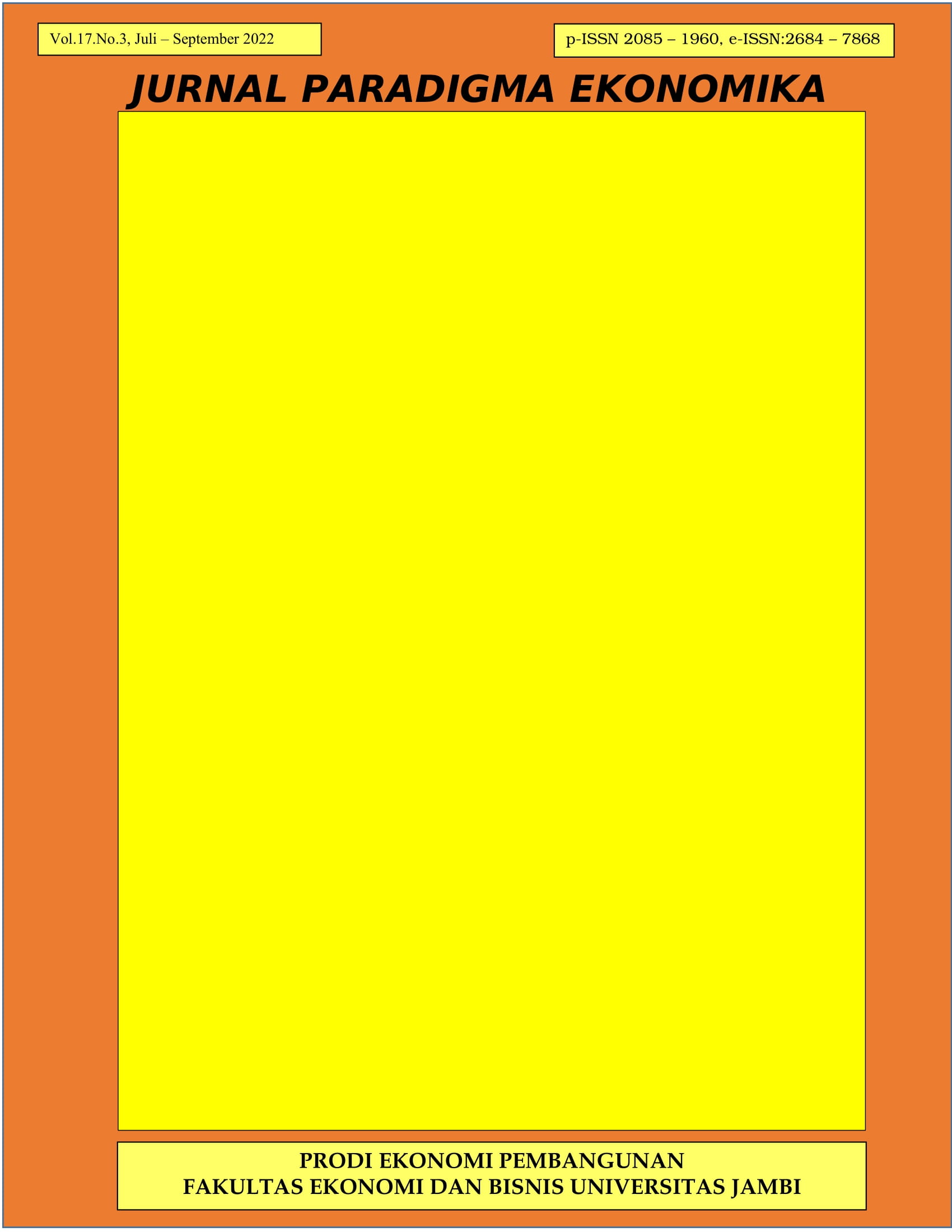Analisis Hubungan Pertumbuhan ekonomi dan Ekspor Indonesia ke china dengan pendekatan kausalitas Granger
DOI:
https://doi.org/10.22437/jpe.v17i3.20130Keywords:
Economic growth, exports to ChinaAbstract
The purpose of this study is to analyze the causal relationship between economic growth and the value of Indonesia's exports to China, the type of data used in this study is secondary data with an annual time period from 1995 to 2020, the analytical tool used in this study is the Granger causality test. Based on the results of the Granger causality test, it shows that there is no unidirectional or two-way relationship between economic growth and exports to China, so it can be concluded that economic growth and exports to China do not have a unidirectional or two-way causal relationship.
Downloads
References
Asian Development Bank. (2016). Key indicators for Asia and Pasific 2016. Asian Development Bank Statistics.
Asian Development Bank. (2013). Key Indicators For Asia and Pasific 2013. Asian Development Bank Statistics.
Badan Pusat Statistik.(2013). Indonesia dalam Angkat Tahun 2003.
Darman. (2017). Analisis Pengaruh Indeks Ekspor, Impor dan Harga Konsumen terhadap pertumbuhan ekonomi di Indonesia. Jurnal Manajemen Indonesia. Management Departement, School of Business Management, BINUS University
Dornbusch, Rudiger, Stanley Fischer, Richard Startz. Macroeconomics. 9th Edition. McGraww-Hill.2004
Emilia, E., Bhakti, A., & Mustika, C.(2021). Analsis determinan yang mempengaruhi perdagangan luar negeri Indonesa terhadap dua negara yang terlibat perang dagang Amerika Serikat VS China . Jurnal Paradigma Ekonomika, 16(3), 471-486. https://doi.org/10.22437/jpe.v16i3.14342
Fatmawati. (2015). Analisis pengaruh perdagangan luar negeri dan hutang terhadap PDB.Jurnal JESP.Universitas Negeri Malang.
Gujarati, Damodar N. (2004). Basic Econometrics. 4th Edition. McGraw-Hill. 2004
Gujarati, Damodar N. (2003). Basic Econometrics. Fourth edition, International Edition. MC Grow Hill.
Haryadi. (2007). Ekonomi internasional teori dan kebijakan. Biografika: Bogor.
Mankiw, George N. (2001). Macroeconomics. 5th Edition. McGraw-Hill.
Mustika, C. ., & Achmad, E. (2021). Analisis pengaruh nilai tukar, pertumbuhan ekonomi dan tenaga kerja terhadap ekspor Indonesia dan Malaysia ke China. Jurnal Paradigma Ekonomika, 16(2), 379-390. https://doi.org/10.22437/jpe.v16i2.12660
Nopirin. (2003). Ekonomi Intrenasional, BPFE UGM Yogyakarta
Pradnyani dkk. (2018). Pengaruh variabel makro ekonomi terhadap penyaluran ekspor impor dengan metode pembayaran Letter of credit. Journal of Agribusiness and Rural Development Research. 4(1), 44-50
Sims, Christoper. (1980). Macroeconomics and Reality. Econometrica.
Yusuf, Widyastuti. (2017). Analisis pengaruh ekspor impor komoditas pangan dan liberalisasi perdagangan terhadap neraca perdagangan. Jurnal manajemen agribisnis. 4(1), 46-56
Yeti Andriani dan Andre. (2017). Penelitian implikasi perjanjian kemitraan ekonomi komprehensif indonesia Australia terhadap perdagangan luar negeri. Journal International Studies. 6(1), 79-92
Z Zamzami, D Hastuti, S Sunargo. (2020).Pengaruh ekspor Asia Timur terhadap pengangguran di Indonesia, Jurnal Paradigma Ekonomika, 15 (1), 59-74
Downloads
Published
How to Cite
Issue
Section
License
Copyright (c) 2022 Budi, Candra

This work is licensed under a Creative Commons Attribution-ShareAlike 4.0 International License.









